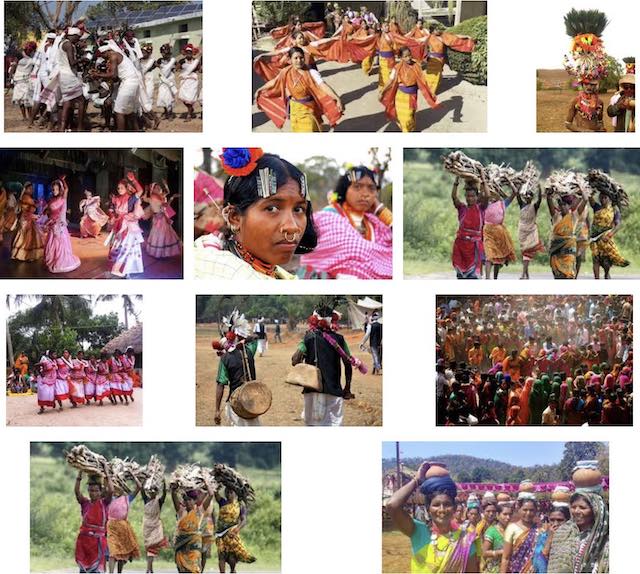To read the full story and view a series of photos, click here >>
Thirty-four years ago when he began to plant trees, no one, including him, had the slightest idea that his effort would give birth to an entire forest.
It all began with a dream he had in 1979 to plant trees on barren land for small animals and birds to build their homes on the tree tops.
Chasing his dream, Jadav Payeng, then a young lad, belonging to the Mishing tribal community in Jorhat district, in the north eastern state of Assam, began to plant trees regularly.
Decades later, the trees have transformed into a lush forest covering 550 hectares of land, home to wild elephants, tigers, rhinos and deer.
Similarly, he is growing trees on another 150 hectares of land, which is adjacent to the first forest he helped plant.
In ap helped grow after him, as Mulai Kathoni Bari or the forest of Mulai, Payeng’s pet name.
In 2012, India’s premier educational institution, the Jawaharlal Nehru University (JNU) named him the ‘Forest Man of India’. […]
“Payeng is a true conservationist who is working generously on the issue, and he has shown what an ordinary person with good motive and will power can do,” said Assam chief minister Tarun Gogoi.
Source: India’s forest man – Features – Al Jazeera English
Address : https://www.aljazeera.com/indepth/features/2014/01/indias-forest-man-201411762848958203.html
Date Visited: 23 February 2023
“National development and the development of tribal communities are linked to each other.” – Droupadi Murmu
Speeches by the President of India >>
Up-to-date reports by Indian experts and journalists
Search tips
Combine the name of any particular state, language or region with that of any tribal (Adivasi) community.
Add keywords of special interest (music, poetry, dance just as health, sacred grove and biodiversity); learn about the rights of Scheduled Tribes such as the “Forest Rights Act” (FRA); and the United Nations “Declaration on the Rights of Indigenous Peoples”, “Universal Declaration of Human Rights”, “women’s rights”, or “children’s right to education”.
Ask a question that includes “tribal” or “Adivasi”, for instance: “Adivasi way of life better?” (or “tribal way of life worse?”)
Specify any particular issue or news item (biodiversity, bonded labour and human trafficking, climate change, ecology, economic development, ethnobotany, ethnomedicine, global warming, hunter-gatherers in a particular region or state, prevention of rural poverty, water access).
For official figures include “scheduled tribe ST” along with a union state or region: e.g. “Chhattisgarh ST community”, “Himalayan tribe”, “Scheduled tribe Tamil Nadu census”, “ST Kerala census”, “Particularly Vulnerable Tribal Group Jharkhand”, “PVTG Rajasthan”, “Adivasi ST Kerala”, “Adibasi ST West Bengal” etc.
In case the Google Custom Search window is not displayed here try the following: (1) toggle between “Reader” and regular viewing; (2) in your browser’s Security settings select “Enable JavaScript” | More tips >>
Note: hyperlinks and quotes are meant for fact-checking and information purposes only | Disclaimer >>
List of websites covered by this Google custom search engine
Academia.edu (platform for academics to share research papers) – www.academia.edu
Archive.org – https://archive.org
Centre for Science and Environment – https://www.cseindia.org
Current Conservation – https://www.currentconservation.org
Development and Cooperation (D+C) https://www.dandc.eu
Down To Earth (India) – www.downtoearth.org.in
India Environment Portal – www.indiaenvironmentportal.org.in
Harnessing Nature Magazine – https://harnessingnature.online
Mongabay-India – https://india.mongabay.com
M S Swaminathan Research Foundation – www.mssrf.org
Navdanya (protecting India’s biodiversity based food heritage) – https://navdanya.org
Third World Network (Penang, Malaysia) – https://twn.my
The Shola Trust (nature conservation in the Nilgiri region) – www.thesholatrust.org

Indian online periodicals and platforms | Images view >>
~ ~ ~
Personalize your CustomSearch by combining other search words >>
(e.g. name of a tribal community and region, a craft, or dance and puppetry)
Research the above issues with the help of Shodhganga: A reservoir of theses from universities all over India, made available under Open Access >>
Note: hyperlinks and quotes are meant for fact-checking and information purposes only | Disclaimer >>
[Bold typeface added above for emphasis]